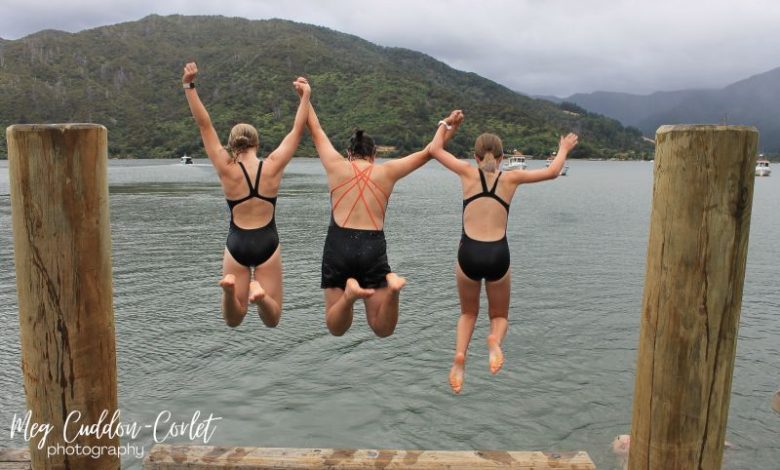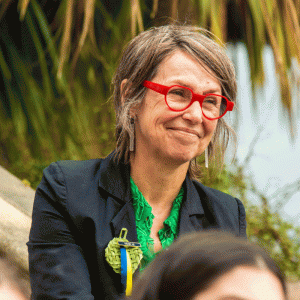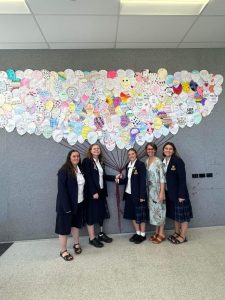A new vision for learning at Marlborough Girls’ College
Positive relationships are the foundation for powerful learning, says Principal Mary-Jeanne Lynch of Marlborough Girls' College.

Marlborough Girls’ College in Blenheim has more than 60 years of history, and long-standing traditions.
Taking the helm of such an established institution and ensuring it remained relevant for the next 60 years is no mean feat. But when Mary-Jeanne Lynch was appointed in 2017, that’s the task she was given.
Read the latest print edition of School News HERE
A new vision
When Lynch first came to Marlborough Girls’ College, the school values were ‘Respect, Responsibility and Achievement,’ which was, in her words, “quite traditional”.
But with a more diverse population than ever before, and a growing community, Lynch said that the motto no longer felt appropriate for Marlborough Girls’.
“We had a lot of discussion with our staff and students around what’s really needed to equip young people to be successful in quite a different future. We landed on a new vision of learning, one where relationships come first and learning is deep, enriching, connected to the community and to real life in a way that is relevant for young people.”

From this discussion a new whakataukī (motto) was adopted: Ma te kahukara ka rere te manu | adorn the bird with feathers so that it may fly.
Along with this new motto were new school values: whanaungatanga, manaakitanga and kohtahitanga. These values are intertwined with the school’s new vision for learning. Whanaungatanga emphasises the sense of belonging and community. Manaakitanga encompasses values of “integrity, trust and sincerity [to] support an environment of care.” Finally, kohtahitanga is about unity and solidarity.
To Lynch, these values underpin learning in a significant way: “positive relationships are the foundation for powerful learning.”
It’s her hope that the relationships fostered at Marlborough Girls’ College will create lifelong learners who actively contribute to their community.
Prioritising wellbeing
Part of this vision for learning included uplifting wellbeing for the whole school community. That meant implementing a strong Hauora programme for the students following the Te Whare Tapa Whā model.
A 2019 school review into wellbeing found that reform and strengthening was required. Now, students meet for extended periods in their whānau classes, helping them to form strong bonds with an adult teacher and set goals around their learning.
Each Wednesday, an extended whānau time allows for weekly sessions covering each pou of Te Whare Tapa Whā: wairua (spriritual); hinengaro (mental and emotional); whānau (social) and tinana (physical).
Another vital component of improving whole school wellbeing is the Star programme. The programme is a tuakana/teina model, where Year 13s are paired with Year 9s. Year 12s and 13s are given specific training to be Stars mentors. They follow a structured programme which teaches students essential skills like goal setting, time management, communication skills and relationship building. At the end of the year, students plan and organise themselves to go into the community and give back.
Lynch said the programme “is some of the best leadership training we have seen and is quite remarkable.” The school reported a sharp drop in disciplinary actions like suspensions and stand-downs in 2020 shortly after the programme was introduced. Lynch said she believes Stars was a major contributor to these positive changes.
Connected curriculum
With a new vision for learning came a new junior curriculum, geared toward connected learning.
The staff, working alongside Dr Peter Meihana and Dr Liana MacDonald, have been trialling this new curriculum for the past few years. According to the MGC Charter, Strategic & Annual Plan 2019 – 2023, the new curriculum is focused on “place-based learning, exploring difficult pedagogies and the new Aoteaora NZ Histories curriculum”.
“Students engage and explore learner capabilities as well as interesting contexts for learning across a range of subjects,” said Lynch.
“We don’t necessarily teach English, Math, Science, Social Studies, Health and PE and all the rest of it. Instead, we have designed courses that work to embed matauranga Māori, are connected with place and space, with businesses and not-for-profits in our community, and provide students with the opportunity to learn new knowledge and skills, in particular developing the capabilities that are outlined in our vision for learning: connections and community, relationships and deep learning.”
In Years 9 and 10, students at Marlborough Girls’ College can choose from “semester courses” that are context-based. These are built around the eight leaning areas in the NZC: English, Arts, Health and Physical Education, Languages, Mathematics and Statistics, Science, Social Sciences and Technology. Some courses cover more than one learning area of the NZC. For example, “Nature’s Fury”, available in Year 9, examines natural disasters and their human impact, covering both Science and Social Science aspects. Similarly, “Body as Art” covers both Science and Visual Art.
Additionally, Marlborough Girls’ College has moved away from streaming. Lynch said some courses are designed for those students who need more support, but all other courses are mixed ability, using principles of Universal Design for Learning.
These courses are aimed at creating personalised learning pathways for each student, though their choices are constrained within NZC guidelines. In combination, Lynch describes the junior school as having a “broad, balanced, connected curriculum.”
Marlborough Girls’ College is also currently undergoing a co-location project with Marlborough Boys’ College that began in 2015. The Te Tātoru o Wairau project has been codesigned with four of the eight local iwi: Ngāti Kuia, Ngāti Tārua, Rangitāne and Ngāti Toa. They’ve outlined their vision for learning and curriculum, which Marlborough Girls’ College have included in their redesign of the junior school.
With codesign and a commitment to Te Tiriti in mind, Lynch has noted that the “broad, balanced and connected” curriculum weaves elements of the new Aotearoa NZ Histories curriculum throughout their semester courses. The aim is to create a curriculum “reflective of the history and environment of the Wairau,” interweaving opportunities for “teaching and learning about resistance and adaptation strategies.” The curriculum also aims to “tackle the challenges of climate change, environmental degradation, loss of freshwater, and support the matauranga of the iwi.”
Other priorities include providing localised Māori context for learning, understanding the history of the school land and using marae as spaces for teaching and learning.
In 2024, Marlborough Girls’ College will roll-out an extended version of its junior curriculum to include Year 11s, replacing the existing Level One NCEA programme.
Lynch said that when staff first presented the idea to the Board of Trustees, the student representatives on the board – who were in Years 11 and 12 – were very excited at the prospect.
“They described – quite brilliantly, actually – the difference between the breadth and depth of the learning they could do in Year 9 and 10, compared to the way they were drilled to learn and regurgitate knowledge [in Year 11] so they could pass the test and move on. They also described the stress and pressure of assessment driven learning… none of which was relevant to their lives.”
By replacing the current Year 11 course with an extended version of the junior curriculum, Lynch said the school will “continue to develop students’ emotional capabilities – their own sense of self and emotional wellbeing through to the end of Year 11. When they hit high stakes assessment in Years 12 and 13, they are purposeful, they know where they want to go, they know how to learn, and they know what their strengths are and how to achieve successfully.”
The extended curriculum will enable more “connected learning” from Year 9 to Year 11, which she believes will give the new cohort “an edge”.
The new Year 11 course will offer more time on “rich, deep learning”, improving wellbeing and preparing students for NCEA Level Two.

Changing assessment
By moving away from assessment-based learning, Marlborough Girls’ College has opened itself up to new measures of success. The academic awards in the junior school have evolved into the Kairangi awards, celebrating excellence and innovation.
“We’re looking at how to acknowledge students’ capabilities,” said Lynch. As part of that journey, Marlborough Girls’ College has joined the New Metrics project with the University of Melbourne’s Assessment project. It’s a project that recognises the need to evaluate a young person’s capabilities: their values, attributes and skills. It aims to broaden the definition of educational successes beyond academic metrics.
Ultimately, the extensive changes that have happened in the past few years at Marlborough Girls’ College, although at times running into teething issues, are about future-proofing the education that students receive. As Lynch puts it: “Our education needs to be focused on relationships, because people make the world go around. He tangata, he tangata, he tangata. We need young people to be intellectually curious. We need them to be creative. We need them to think deeply about things and solve problems. That requires grit and perseverance.
“It’s nothing new that we need everybody to be able to be literate and numerate. But then what are we going to do with it beyond there? Then we get into this cool space where you can equip young people with these foundational skills and capabilities and let them go —they’ll achieve something remarkable.”









